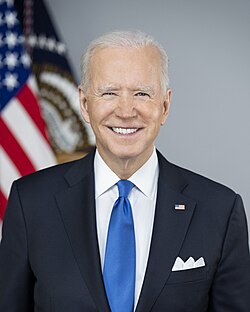| |||||
| Decades: | |||||
|---|---|---|---|---|---|
| See also: | |||||
This article outlines United States-related events which occurred in the year 2021.
Contents
- Incumbents
- Federal government
- Governors
- Lieutenant governors
- Ongoing events
- Events
- January
- February
- March
- April
- May
- June
- July
- August
- September
- October
- November
- December
- Deaths
- See also
- References
- External links
The COVID-19 pandemic continued to heavily impact the US, with the emergence of numerous COVID-19 variants leading to a substantial rise in both infections and deaths across the country.
Though Donald Trump lost his bid to be re-elected president of the United States to former vice president Joe Biden, Trump's attempts to overturn the 2020 United States presidential election have continued throughout the year. On January 6, a minority of pro-Trump protestors stormed the Capitol building and temporarily halted the formal counting of electoral votes in Congress.
2021 was additionally defined by protests against COVID-19 lockdowns in response to the pandemic, as well as the beginning of a period of high inflation and ongoing protests mostly against police brutality. The year also saw an extremely active Atlantic hurricane season, a destructive wildfire season in California, and a power crisis in Texas.


